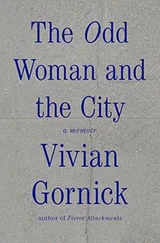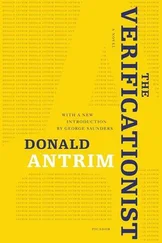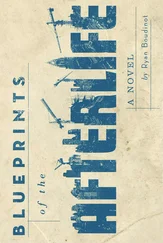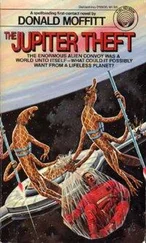The suit my mother made for my father was impeccable. He told me that he wore it until he wore it out. My mother’s skill as a tailor is evident in all the clothes she ever made. Yet when it comes to the apparel she championed as wearable works of art — and tried without success to market as her Peace Goods line — there remains the problem of power. The power of my mother’s robe is the power that was strongest in her at the end of her life. This was her power to force away the people she loved. There is beauty in the robe, as there was beauty in my mother, who, when young, was lively and playful and striking to look at, and who even in her worst sickness never lost her ability to laugh. But it is likely, for a person newly confronted with her kimono, that the naked innocence it reveals will defy empathy. When this happens, the conversation among the maker, the wearer, and the viewer of clothes, the conversation open to all of us, simply through living in a world where people get dressed, will be interrupted.
That my mother knew so thoroughly her craft and the traditions of fashion, and that she went on to make, in her final decade, such declamatory yet incomprehensible clothes, such odd things to wear, gives — in light of her scornful retreat from people and the public world — a supreme, unexpected dignity to her creations. I realize now, as I did not before she died, that, however violent or delusional she may have been when I was growing up, she was, after all, working. She was smoking and drinking herself into her grave, yet she was managing, in her classrooms at the college, and in her shop near the river, and in her house at the bottom of the road, to carry on and endure. “Death? Or life?” the kimono seems to ask. Because the appliqued symbols that form these questions are so appropriate to the idea of ceremony and pageantry, and yet so childlike and puzzling, the viewer looks away from the garment and considers the wearer. But my mother in her robe is nowhere to be found. Her inner life has been transferred to the surface of the kimono.
My mother lived her life inviting death. When her cancer was diagnosed, and she was summarily ordered by her doctors to quit smoking, she did so in a matter of days, and seemed afterward rarely to think of smoking, or to regret that she ever had. Smoking had got her to the one place where the major competing strains in her consciousness of herself — as a visionary child and as a brokenhearted woman — came together, and made her whole, and left her to die in peace.
Years after her death, my worry over her persists. Worry may be what I am trying to overcome when I talk to my dead mother, as I did that evening in the stairwell at the New York Public Library. I was brooding over some problem that had existed between us, and sharing with her, out loud (though not too loudly), my thoughts. On the first-floor landing, I briefly imagined her floating near the ceiling. Stitched onto her silk kimono were provisions and companions for her winged journey into eternity. “Mom!” I said, and, as I called out to her, I did not glance over my shoulder, and I did not, in that passing instant, dare to see, at a modest height above the ground — my mother, not there.
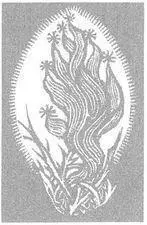
Ihave often wondered what might have happened to my mother after she finally stopped drinking, in 1983, had it not been for her father, who, I suspect, worried over his daughter every day of his life as a parent, and who, in the years leading up to his death at the age of ninety, energetically sought reassurance, typically from me, though also from my sister, that his daughter would one day overcome her anger and make a place for herself in the world.
“Don, what do you think of your mother’s prospects?” he would ask me whenever I visited him and my grandmother in North Carolina. “Do you think she’s doing all right?”
All right? I never knew quite what to say. Should I speak the truth and risk upsetting him? Sometimes I said nothing. I remember sitting on the sofa in the house on McCoy Cove Road, feeling helpless, looking out the living-room window at the low gray mountains nearby.
My grandparents’ house was neither beautiful nor remarkable — not like many Black Mountain residences, some of which had been built as vacation bungalows in the Arts and Crafts style — but it was a good house, and my grandparents, while in their seventies and eighties, had done painstaking work on it and on the narrow, sloping yard that was given over, out back, to shade trees overhanging a picnic table, and to my grandfather’s vegetable garden and my grandmother’s flower beds. There was a garage out back, too, at the end of the driveway that passed the house as it climbed the grade from the road. Sometimes when he was in a storytelling mood, my grandfather might slip away through the kitchen and across the patio and up the driveway to his workroom at the back of the garage. A moment later, steady on his feet, and chewing a toothpick or a stick of Dentyne, he would come inside the house, lower himself into his chair, and begin volubly speaking. Often, my grandmother got up and left the room, because she did not approve of his drinking.
My favorites of his stories took place in the mountains. My grandparents had graduated — she in 1926, he a year later — from Tusculum College in Greenville, Tennessee. At around the time they were there, I remember him telling me, a scholarship was endowed by a widow who lived in, of all places, Miami, Florida. It was the widow’s desire, as I recall my grandfather’s understanding of things, that part of her money be used to educate students from the poorer reaches of the western Appalachias. She had herself been a child of the mountains, I remember from the story, and, through education, had found her way into the modern world. Because the pupils brought to Tusculum under her scholarship were largely unschooled, the college committed itself to their comprehensive education. In return, the matriculated men and women — who might go on to train in medicine or law or engineering, but who, I gathered, often quit with teaching degrees — promised to return to their home communities, where they would live and work for a set term of years.
Neither of my grandparents was a recipient of the scholarship. But for a time after he graduated, my grandfather recruited for it. He told of driving a Model A Ford along dirt trails and over hilltops and through narrow mountain hollows; sometimes, he said, he drove up creek beds. When he came across a house or a small subsistence farm, he would get out of the car and ask whether the inhabitants knew of any young people who might want to go to college. Were there any around, he would ask, who showed signs of being school material?
One of my grandfather’s tales had him driving a rocky creek bed that led toward a mountain hamlet. As my grandfather neared the hamlet, he heard rifle fire echoing from the darkness behind the trees. When he got close enough to see buildings, the firing let up. My grandfather drove into a clearing surrounded with old structures that featured cluttered porches on which, I seem to recall him saying, dogs and children sat eyeing him. It was a poor place, like most all the places he visited in that job, a place that I picture as a scene in a photograph taken by Walker Evans or one of the other photographers who worked for the Works Progress Administration during the Depression. That day, men with guns pointed toward the ground came out into the open — they came from here and there, not in a group — and gathered in a circle around my grandfather’s car, where they politely discussed his business with him. When that was done, my grandfather got back in his Model A and drove on. I can imagine one of the men saying to him, “Go on up that way and you’ll find a boy,” then waving a hand in the air. The mountain men retreated into the forest from which they’d come, and, after my grandfather had got a short distance away, their firing resumed. It is not clear to me whether my grandfather knew with certainty, or believed with conviction, that the men had been taking aim at each other. But I remember that he sometimes talked about the feud between the Hatfields and the McCoys, which took place in the West Virginia and Kentucky mountains not terribly far north of the Tennessee farm country where he and my grandmother had been raised. The Hatfield-McCoy feud involved deliberate assassinations and a love affair, though it did not, contrary to folklore, carry on for scores of years. It lasted from 1878 until 1890, and exerted a tremendous hold on the imaginations of people living in that part of the world in the years during and immediately after its heyday as news.
Читать дальше



